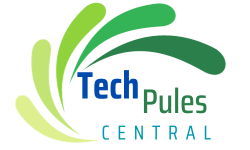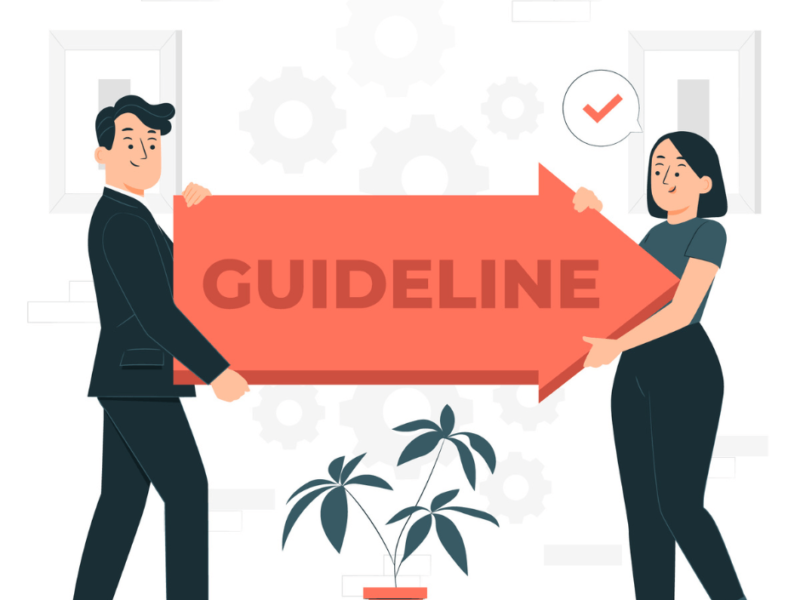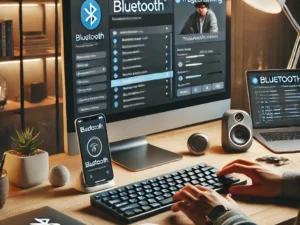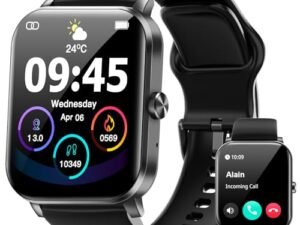To master technology, start by selecting a specific area of interest. Research recent advancements and necessary tools in that field for a strong foundation.
Navigating technology can be daunting due to rapid advancement and diverse applications.
Becoming skilled in technology requires curiosity and a strategic learning approach.
As a beginner, you should focus on foundational concepts. This is crucial because it will help you build a solid base. With a solid base, you can then expand your knowledge.
Intermediate users can enhance their understanding by taking specialized courses. These courses also provide practical experience to bridge theory and practice.
Experts maintain a competitive edge by staying up-to-date on trends. They do this through continuous learning and professional networking.
A customized technology guide can help with this journey. It provides step-by-step instructions and resources for all skill levels.
Understanding The Learning Process
Embracing new technology can be both exciting and intimidating. The way people learn can affect their success. This applies to various areas like software, programming, and new gadgets.
Understanding one’s learning process is pivotal to staying ahead in technology. To become proficient, it is important to adapt to the ever-evolving landscape.
Consuming information is not the only goal. We must also find ways to assimilate knowledge. Additionally, we should make the best use of available resources. This will help foster competence and confidence.
Everyone has a unique approach to learning, especially with technology. Recognizing personal preferences and customizing learning experiences makes acquiring technological skills more efficient. It also makes it more enjoyable.
Let’s explore various learning styles and strategies to enhance your tech education.
Learning Styles In Technology
-
- Visual Learners: Grasp concepts best by seeing diagrams, illustrations, and written instructions.
-
- Auditory Learners: Prefer to hear information through lectures, podcasts, or discussions.
-
- Kinesthetic Learners: Need to interact with the technology through hands-on experience.
-
- Reading/Writing Learners: Understand better by reading text and writing notes.
Discover your preferred learning style and align it with your preferences. Tailor your learning process to optimize your technological skill acquisition.
Effective Learning Strategies
-
- Establish clear, attainable goals.
-
- Break down complex information into manageable segments.
-
- Divide regular practice time to build muscle memory and familiarity.
-
- Use many resources like online courses, tutorials, forums, and hands-on projects.
-
- Assess your progress with tests or projects that apply new knowledge.
-
- Seek feedback from knowledgeable peers or mentors.
-
- Stay flexible and adapt as technology evolves.
By applying these strategies to your learning habits, you create a strong framework. This framework streamlines the acquisition of tech skills and promotes continuous improvement.
I used HTML elements in the code to structure the content. The format is SEO friendly and easy to read.
Users use tags for subheadings to make it clear what each section covers. The lists order the learning styles and strategies for easy understanding. You can present this information using both ordered and unordered lists. This structure should work well in a WordPress environment. It supports SEO and user-friendliness.
Choosing The Right Technology Skill
Selecting the right technology skill set is pivotal in today’s fast-paced digital world. Our guide helps you identify technical abilities for career advancement. It ensures informed decisions tailored to future industry demands.
Identifying Industry-Relevant Skills
Identifying Industry-relevant Skills
To stay ahead in the tech game, recognizing the skills in demand is imperative. Analyzing job market trends reveals the skills employers covet. Diving into industry forecasts provides a clearer picture of these skills.
-
- Data Analysis: The ability to interpret and leverage data is crucial across sectors.
-
- Cybersecurity expertise: Safeguarding digital assets is more important than ever.
-
- Cloud Computing: With businesses migrating to the cloud, the skill here is a must.
-
- AI and Machine Learning: Skills that drive innovation and automation.
-
- Software Development: Foundational for creating and maintaining digital tools.
Assessing Personal Goals
Assessing Personal Goals
| Goal Assessment | Action Steps |
|---|---|
| Long-Term Career Vision | Identify where you see yourself in 5-10 years. |
| Matching Skills to Vision | Research which skills will empower your desired career path. |
| Personal Enjoyment | Consider what tasks or projects you enjoy most and find related skills. |
| Learning Preferences | Take into account whether you prefer self-study, formal education, or hands-on experience. |
| Resource Availability | Ensure access to the necessary resources for learning and applying the new skills. |
Structured Learning Paths
Structured Learning Paths offers a strategic approach to mastering technology disciplines. The comprehensive guides help you learn essential tech skills step-by-step. They ensure you have a solid understanding of the skills.
Online Courses And Tutorials
-
- Select a course that aligns with your current level and goals.
-
- Commit to a schedule. The schedule should be consistent and flexible. It should adapt to life’s unpredictable nature.
-
- Complete hands-on projects and exercises to apply theoretical knowledge.
-
- Check for quizzes and assessments to test understanding and track progress.
Mentorship And Communities
-
- Join technology forums and online groups related to your field of study.
-
- Seek out a mentor who can offer guidance, feedback, and career advice.
-
- Attend virtual meetups, webinars, and workshops to network and learn.
-
- Take part in discussions and code reviews for a practical learning experience.
Practical Applications And Projects
Embarking on the journey of mastering new technology can be thrilling. But, without practical application, progress may stagnate.
Applying tech knowledge from tutorials and articles solidifies your learning. It also showcases your skills to potential employers or clients.
Dive into practical applications and projects to bring tech expertise alive. Explore hands-on experiments and creative solutions.
Real-life Problem Solving
Real-life Problem Solving
Every technological advance begins with solving a real-life problem. Tech enthusiasts can identify common challenges in everyday scenarios.
They can then deploy their skills to devise practical solutions. Here’s how to approach problem-solving through technology:
-
- Identify a problem that you often face in your daily routine. Or, identify a problem that is common in your community.
-
- Research to understand the issue and explore how technology can address it.
-
- Use your technical skills to design a prototype solution. This can include coding a program, developing an app, or building a hardware device.
-
- Test your solution in real-world conditions and iterate to refine its effectiveness.
-
- Share your project with peers for feedback, showcasing how technology can transform lives.
Engage with local organizations. Engage with online communities. Find problems that need technological interventions.
This practical experience enhances your skills and helps society progress.
Building a Portfolio
Building A Portfolio
As you apply technology to solve real-world issues, documenting these projects becomes vital. A strong portfolio shows employers or clients your skills and growth. Here’s how to build an impressive tech portfolio:
-
- Start with small foundational projects. These projects highlight core competencies. Build up more complex applications.
-
- Document each project. Detail the problem, your approach, and the technologies used. Include the outcome.
-
- Include visuals, such as screenshots, diagrams, or videos, in your portfolio. This will make it engaging and easy to understand.
-
- You can host your projects on platforms like GitHub. Or, create a personal website where visitors can view your work.
-
- Seek feedback from mentors and peers to improve and refine your portfolio.
Remember to customize your portfolio for your intended audience. This could be potential employers, freelance clients, or a university admissions committee.
Your portfolio connects your technical expertise to tech industry opportunities.
Continuous Learning And Growth
Embracing continuous learning and growth is crucial in the ever-evolving tech landscape. Our guide helps you improve technical skills for personal and professional growth. It illuminates pathways in a digitized world.
Staying Updated With Latest Trends
Fostering a deep understanding of emerging technologies is pivotal. The key lies in recognizing the importance of:
-
- Access respected journals and online tech news sources. This ensures you are the first to know about novel advancements in the industry.
-
- Engage in online courses and webinars for continuous education. These platforms offer up-to-date courses and equip you with the latest skills.
-
- Subscribing to tech-focused channels for podcasts and videos is convenient. It allows for flexible and accessible learning on the go, providing valuable insights.
To stay ahead in technology, scan emerging trends each week.
Networking And Collaboration
-
- Join tech communities and forums to exchange knowledge with like-minded professionals.
-
- Attend tech meetups, conferences, and workshops to forge meaningful connections.
-
- Take part in hackathons or project collaborations, which can lead to innovative breakthroughs.
Connecting with peers opens doors to learning opportunities. Connecting with industry leaders opens doors to professional development.

Credit: onlinedegrees.mtu.edu
Asked Questions On How To Guide On Technology?
How Do You Use Technology?
When using technology, focus on security by using strong passwords. Avoid oversharing on social media.
To avoid addiction, balance your usage of technology. Stay updated on digital etiquette. Respect privacy rights. Use technology for productivity, not entertainment.
How Do You Teach Technology?
Begin by identifying learner needs and establishing clear objectives. Use interactive tools and real-world examples to engage and illustrate concepts.
Break down complex topics into digestible parts. Encourage hands-on practice for skill application. Provide support and feedback to reinforce learning.
How Can We Use Technology?
To use technology, focus on tasks by leveraging productivity apps. Keep learning with online courses or webinars.
Use cloud storage for easy data access. Embrace collaborative tools for team projects. Always ensure digital security to protect your information.
How Can I Be a Responsible User of Technology?
To use technology, respect privacy settings. Avoid overuse of technology and update security software. Back up data and practice ethical online behavior.
Conclusion
Embracing technology need not be daunting. Our step-by-step guide simplifies complex concepts, ensuring you stay ahead.
We design our tips for everyone, whether you’re a beginner or tech-savvy. Keep experimenting and stay curious. Remember, mastering tech is a journey a path to endless possibilities and advancements. Dive in, and enjoy the digital ride!





